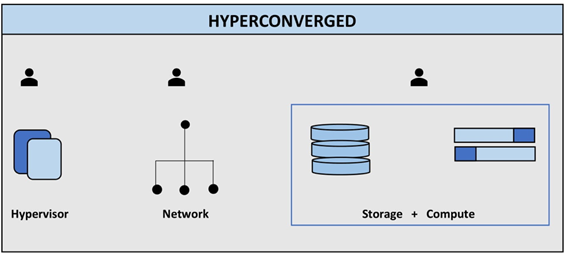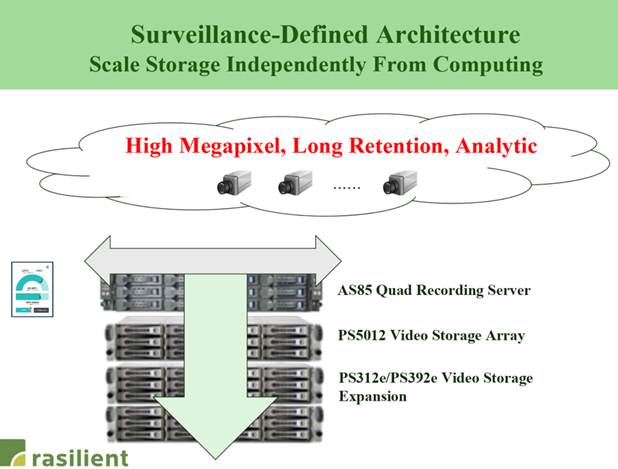An IHS Markit report estimated that there will be more than one billion security cameras deployed globally by 2021. It’s no surprise that with more video surveillance, analytics, and big data comes an increased stress and importance of its foundation: servers and storage.
Hyper-converged infrastructure (HCI) is considered a great and innovative technology for IT and traditional network data. However, is it the right architecture that you can trust with enterprise, mission-critical, and forensic video surveillance? In contrast, Rasilient’s surveillance-defined architecture (SDA) recognizes that the management and nature of video data differs greatly from conventional data and was created for this sole purpose. This white paper will define the fundamentals of both HCI and SDA, as well as discuss the differences between IT and Surveillance organizations in order to illustrate why SDA is the obvious choice when it comes to video surveillance.
What is Hyper-Converged Infrastructure?
Hyper-converged infrastructure (HCI) is an IT architecture that integrates the conventionally physical components of storage, computing, and networking into one platform, using software or virtual machines (VM). In an IT application, this is considered a great improvement compared to its predecessor, converged infrastructure (CI), as it simplified data center complexity by managing it with a single user interface. This architecture is great when organizations are using multiple IT software platforms, with a dynamic number of users, and need to constantly reallocate resources throughout the day/altering schedules. Data applications are typically running for only a few hours, and then resources are reconfigured as more/different applications are ran.

HCI deployments consist of a minimum of three nodes built with computing, memory, and storage to form a cluster. This architecture shares all resources across the cluster; which forces future growth to affect all resources rather than just what is required. This type of setup is difficult to scale in an environment like video surveillance. For example, if a project requires only additional storage, the cluster would require purchasing/adding unneeded computing as well. Because of this nature, HCI scales exponentially rather than linearly.
The implementation of HCI architecture requires specialized training to commission and maintain, additional resource overhead, and typically has associated software licensing fees.
What is Surveillance-Defined Architecture?
The nature of surveillance systems is one of static resource requirements and constant functionality where the calculations for video streams, analytics, Artificial Intelligence, and operator usage are determined from the start. This application is completely different from that of typical data usage for a customer’s IT department – where at any given time, resources will need to be adjusted from one software suite that is in high-demand to a different application. This can be thought of as the difference between timeshares and dedicated property.
Surveillance-defined architecture (SDA) distributes resources amongst different chassis as the project requires. As SDA systems need to expand/scale and various new technologies/policies are introduced, it provides a simple and cost-effective process of adding only the resource that is required to the existing unified infrastructure. Since SDA functions on the bare metal rather than the software layer, it also lowers the overall resource-requirement and can be maintained with less skill specialization. Additionally, there are multiple benefits from separating computing from storage – ranging from a reduction in purchased equipment, smaller footprints, simpler configuration, and more accessible scalability as systems expand.

Traditional hardware created for datacenters is designed to handle a balanced processing load of write-and-read cycles, as users move data and then read that data many times. Whereas surveillance hardware needs to be designed specifically to write video in much higher percentages compared to read capabilities. This is to ensure video data is not lost due to system lag. Continuous data writing to hard drives creates opportunity for disk errors which can lead to corrupted video, reduced performance, or system crashes. SDA prioritizes writing by caching incoming video and ensuring disk errors are reduced through data alignment and in-line defragmentation.
Fundamentally Different: Surveillance and IT
We now know that HCI is purposed for IT, while SDA is meant for video; but why do the different backgrounds create such difficulty when applying to physical security?
Read more. Please download the white paper or listen to the webinar.
